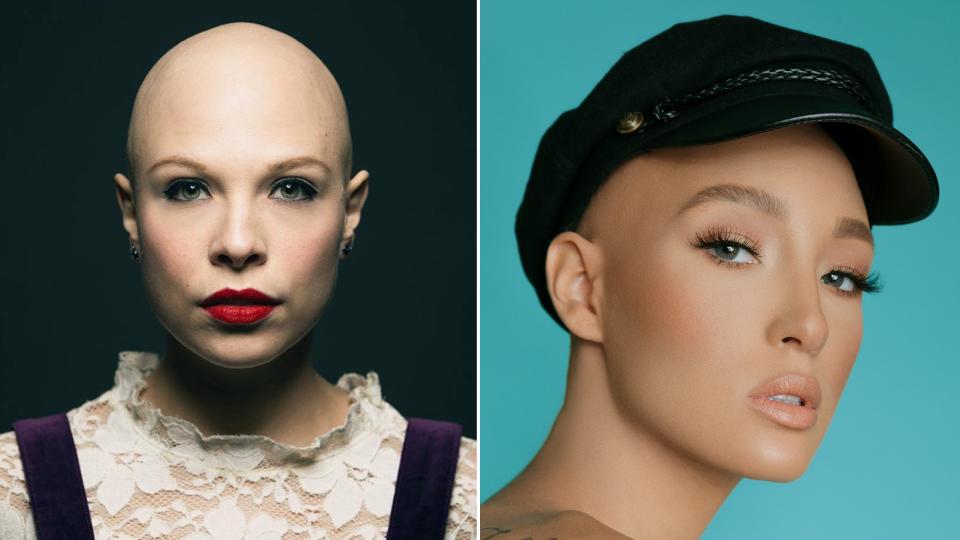Six Women Open Up About How Having Alopecia Changed Their Outlooks on Beauty
Alopecia can be challenging for any person, but it’s especially difficult for women in a world where hair is often considered a measure of femininity and self-worth — your “crowning glory.” And even though 147 million people worldwide have the condition (which occurs when your immune system mistakenly attacks your hair follicles), there isn’t much alopecia visibility out there. As a result, getting a diagnosis can be devastating and alienating. “My hair was me, my identity, my femininity,” Amy-Rose Lynch, a 25-year-old art director in advertising recounts. “I thought I lost myself when I lost my hair.”
We talked to six women about the reality of alopecia and how it’s shaped their beauty routines, emotional well-being, relationships, and work experiences. Some have had it since childhood or their teen years. For others, it’s a new life change they’re still adjusting to. They all speak to the frustrations as well as the unexpected gifts of being a bald woman in the world. “I find beauty in places where people normally wouldn’t find beauty,” says filmmaker Rachel Fleit. “My struggle is totally my strength.”
Rachel Fleit, 37
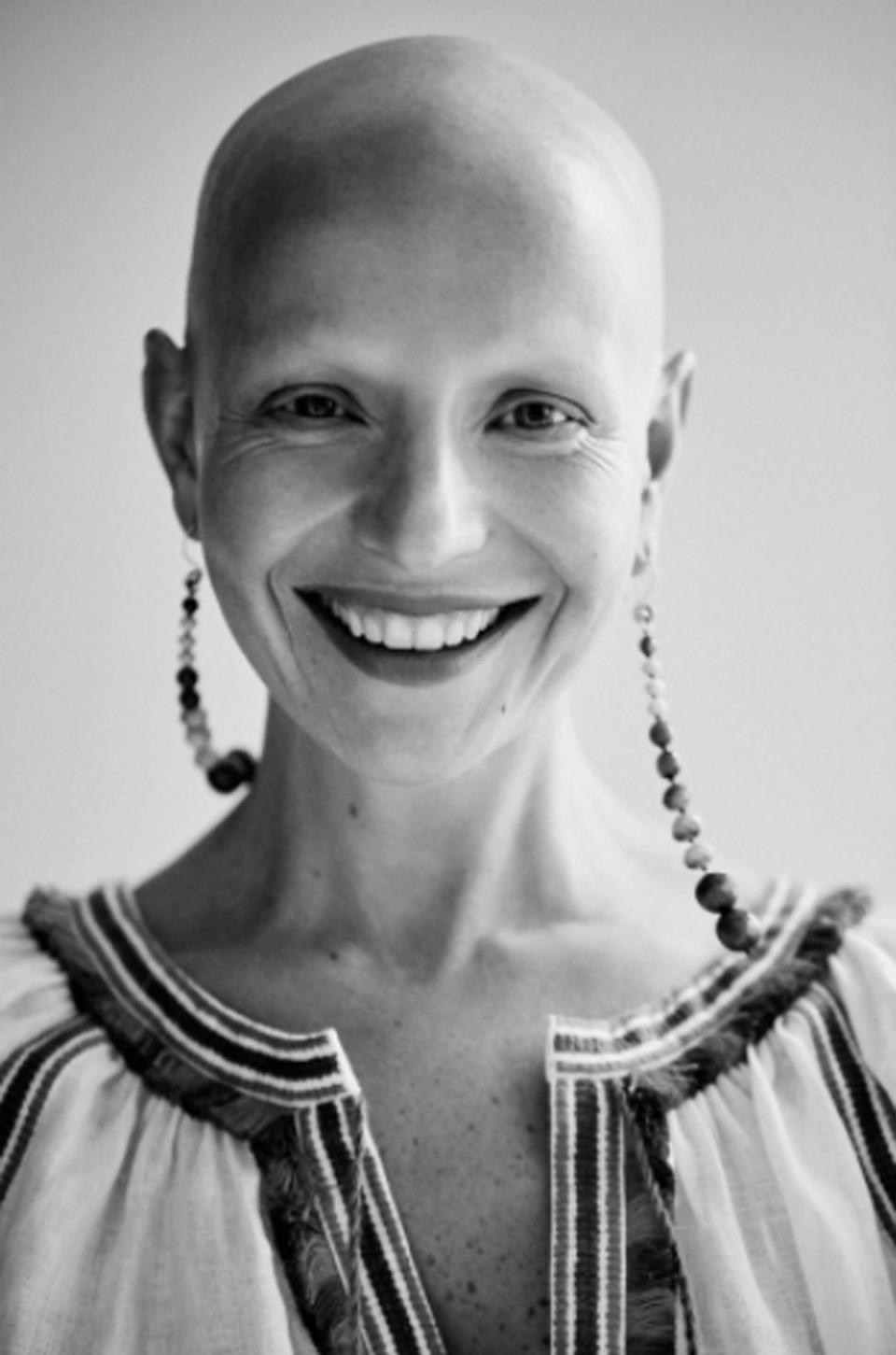
Occupation: Filmmaker, writer, and director
First lost her hair: 18 months old
I was obsessed with keeping up this secret that I had hair and that the hair on my head was my own. I walked around with so much fear and anxiety, and that became normal. But when I was sixteen, I met a new group of kids — I found my tribe. I was gonna stop wearing my wig in college as my fresh start, and when I got there, I just freaked out and couldn’t do it. I consider that year my rock bottom as a person with alopecia. I knew that on the other side of taking my wig off was freedom, but I was afraid to tell my freshman year roommate that I was bald. I slept in my wig every night that year. Then I had this internship in New York that summer at this theater with liberal-minded people. The world opened up when I stopped wearing a wig. My whole life changed, and for the first time, people told me I was beautiful because I was being myself.
"I’m worth a lot — I have no hair, but I’m a whole person."
The more I get down with my beauty and femininity, the less makeup I wear. I spent many years really grappling with beauty and my image. I used to think every time I broke up with a boyfriend, that it was ultimately because I was bald. I will never forget the moment I realized that my ability to love and be loved was not directly related to my alopecia. I realized I’m not missing anything and that I’m worth a lot — I have no hair, but I’m a whole person. The experience of having alopecia universalis has been the greatest one of my life, though I thought it was the greatest curse. It’s shown me a way to be in the world that is just amazing. I treat people differently, I see people differently, I find beauty in places where people normally wouldn’t find it. My struggle is totally my strength.
Jeana Turner, 25
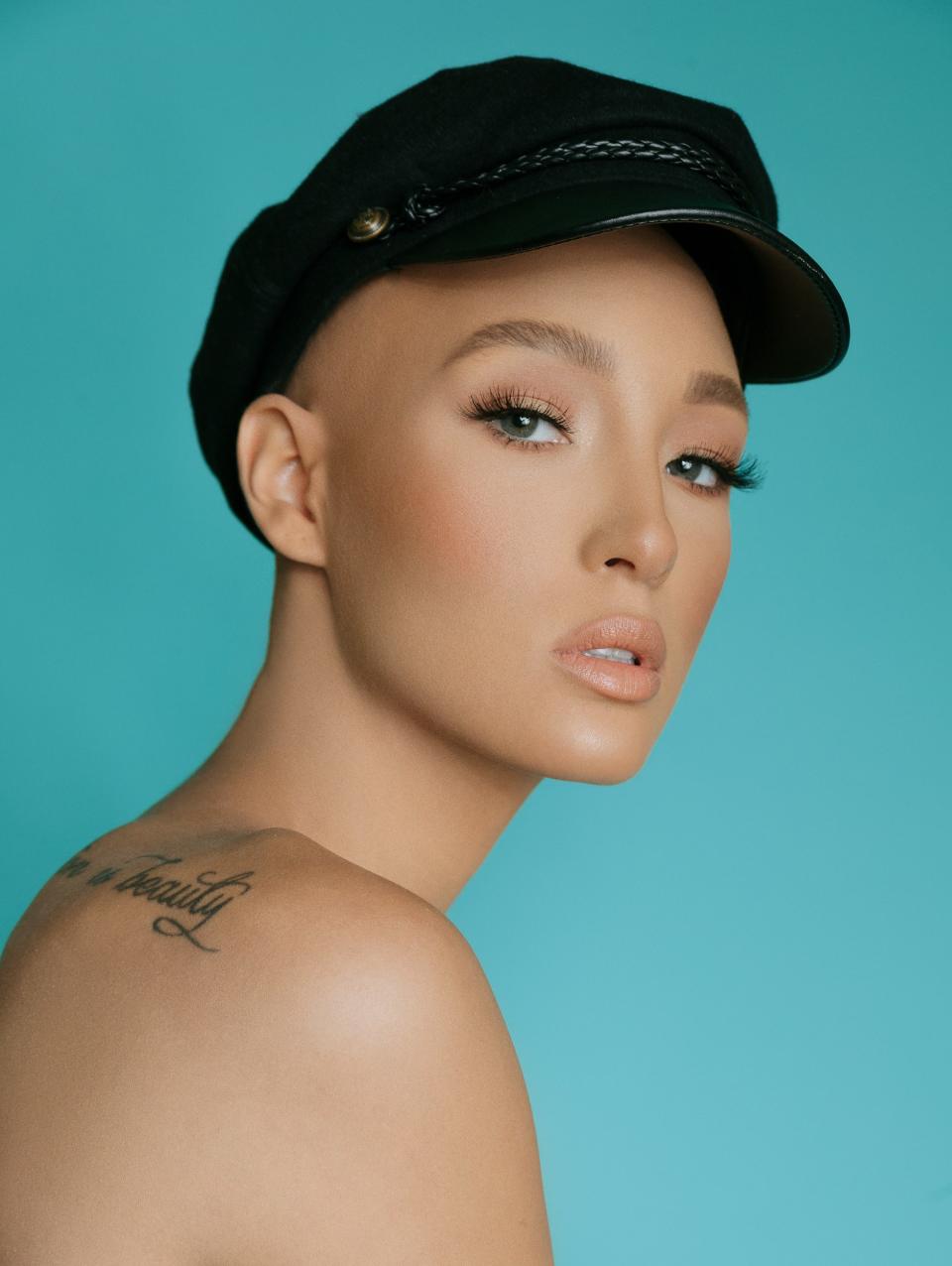
Occupation: Model; runner-up, America’s Next Top Model Season 24
First lost her hair: 12 years old
I lost my eyelashes first when I was about five. Then I didn’t have anything else happen until a little patch when I was nine, and I was bald by the time I was twelve. It still bothers me to constantly be “Jeana, the model with alopecia.” Yeah, I have alopecia, but I’m still a model. Why can’t I just be “the model, Jeana?” I want to be at the forefront not because I have alopecia, but because I’m good at modeling. But I do understand that it is something that I am a voice for, and I put myself in that position by going on TV. Being the first contestant on America’s Next Top Model with alopecia is awesome and a major feat. It still blows my mind that it happened, and it speaks volumes for alopecians.
“I want to be at the forefront not because I have alopecia, but because I’m good at modeling.”
Before, modeling with wigs, I was so sexy. Now, I’m super high fashion, but I’m still the same girl. What I try to get people to understand is that hair doesn’t matter — it can come and it can go in one day, and it shouldn’t be a problem. The industry makes it a little easier on me as a model because I am everyone’s muse, and my image is at everyone’s disposal. That’s the most fun thing, going into a shoot and not knowing what they’re going to make me into that day. I like that wonder, I like that mystery. When I took my wig off on Top Model I was thinking about how much time I spent in my life, sitting on my bathroom floor, painfully gluing a wig to my head — I lost so much of my life just sitting in my bathroom. My beauty routine in the morning went from a good three hours to, now, if I really tried, ten, fifteen minutes. I felt like I got to live life so much more — both a metaphorical and literal part of my beauty routine has changed.
Amy-Rose Lynch, 25
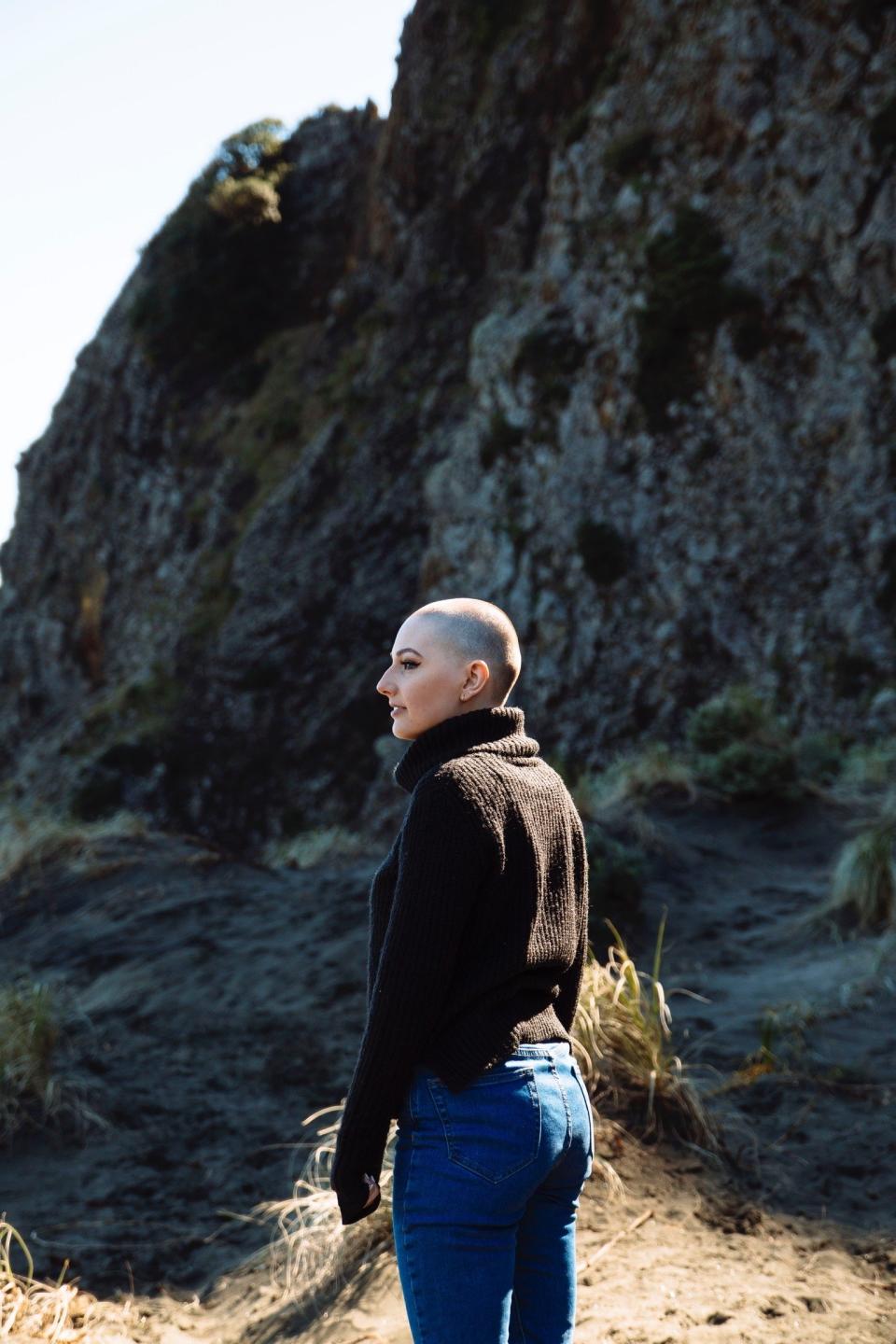
Occupation: Art director in advertising, dancer
First lost her hair: 19 years old
At first, I stopped going out or doing anything that would compromise the hats that I wore to keep my hair loss a secret. Those were extremely dark times for me. My hair was me, my identity, my femininity. As a woman, hair plays such a big part in our lives, our expression, our personalities, and to have that taken away is devastating. My experiences when I reached out for help highlighted how the medical profession isn’t interested in alopecia because apart from the hair loss, you are medically okay — it’s deemed a cosmetic issue. I thought I lost myself when I lost my hair. I couldn’t have fun, I stopped dancing, I couldn’t swim — I just became this shell. I went from dancing every single day, to not at all for five years. It is my biggest regret.
“The game changer will be when we start seeing alopecians in beauty advertising, to help redefine
what beauty really is.”
Announcing to everyone that I was bald was the first step in my healing process. I was met with so much support, love, and curiosity from all my peers, and it truly took so much pain away. I was so miserable when my alopecia was a secret, and when I finally started telling people, I felt as though a huge weight had been lifted off. I found a wig company that made spectacular human hair wigs that gave me my freedom back. It was still hard to take my wig off at the end of the day though, almost like the fantasy would be over until morning. It wasn’t long until I lost my eyelashes and one of my eyebrows too, and that was extremely challenging. I eventually appreciated my bald face as a blank canvas, something I could experiment every day with. The game changer will be when we start seeing alopecians in beauty advertising, to help redefine what beauty really is. I hope that I can be a part of, or help steer, the industry towards that in the future.
Kayla Martell, 29
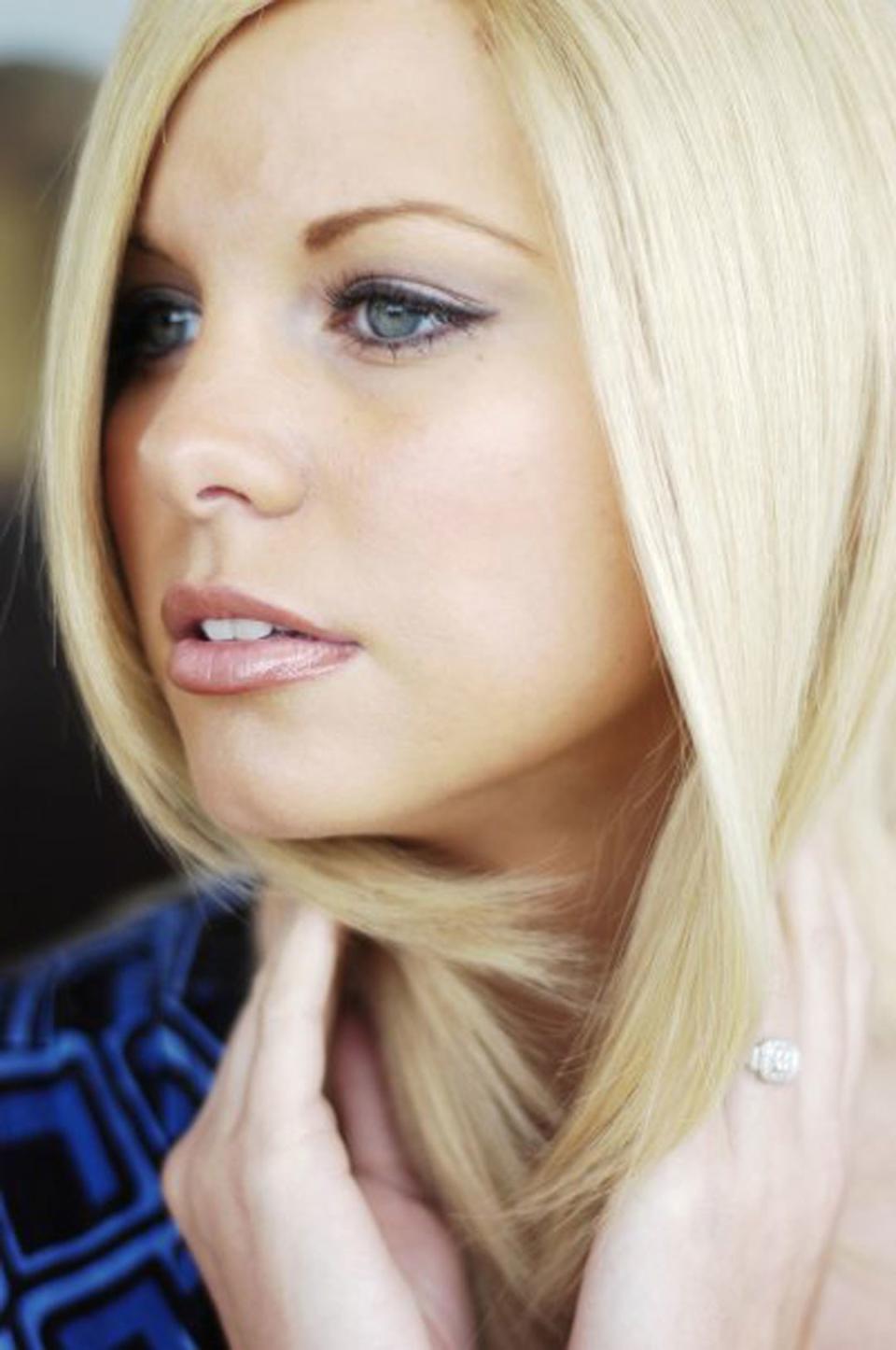
Occupation: Motivational speaker; Miss Delaware 2010
First lost her hair: 11 years old
I decided from the very get-go that I didn’t want to wear a wig because I wanted to be in control of my story and my experience. I think that having alopecia has given me this beautiful blank canvas to be able to create whatever look or style I want to have that day. I find it limitless if you will. I feel like it’s given me a greater purpose beyond myself because I really don’t know what I’d be doing with my life had this not been a part of my path, so if anything I’m grateful for it.
I always try to find an upside to things. That’s just my nature. While other girls were taking hours and hours to get ready, my hair that I competed with for Miss Delaware was styled weeks before and put on a mannequin head. The girls were stressing about whether or not they were going to be ready for their quick changes, and I was like “girlfriend, I’m gonna put my lipgloss on and sit here and have a Gatorade while you do your thing. I’m gonna throw my hair on right before we go on stage.” The Miss America and local crowns are intended and created to be pinned to hair — there is no other way to wear them. If you do any research and find older photos of me, you’ll see that I used to thread a piece of ribbon through the crown and wear it like a headband because there was just no other way. I was like “I earned this crown, I’m gonna wear it.”
Zeynep Yenisey, 23
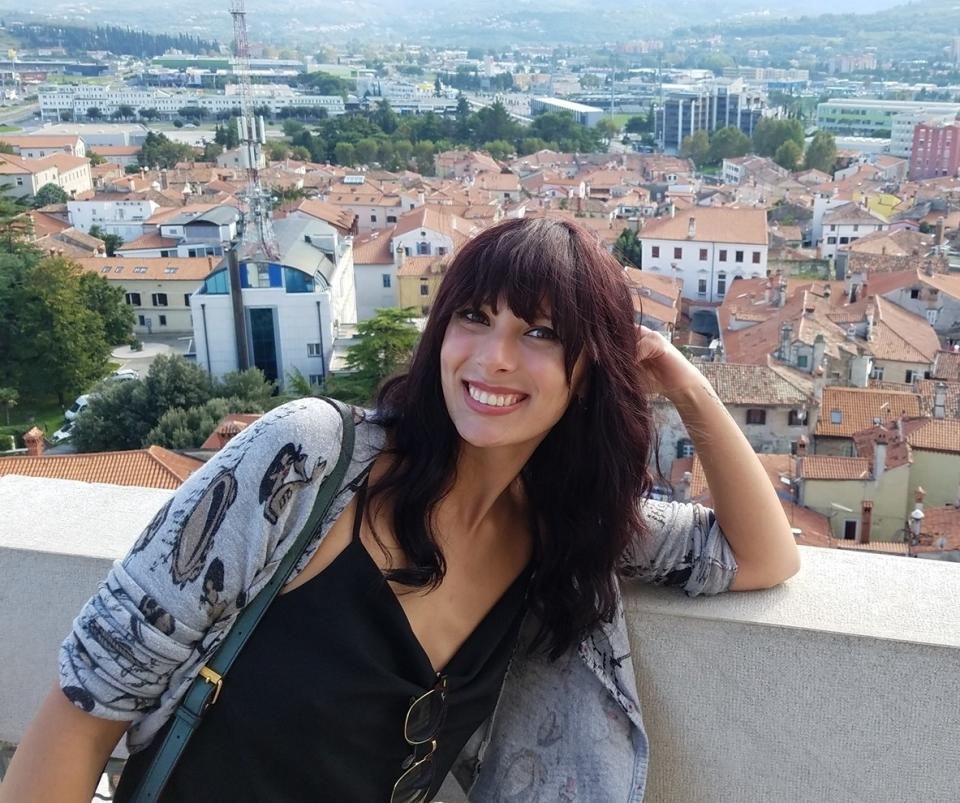
Occupation: Journalist
First lost her hair: In college
I’ve had alopecia since I was six, but I just had a little spot here and there. I was never worried or upset about it. Then, halfway through college, half of my hair fell out. As fast as it started, it stopped, and then it all grew back. Then it started falling out again, and it did not stop. It was so bad at first that I didn’t recognize myself anymore — it was an identity crisis. Initially, I completely stopped dating, and I actually stopped hanging out with my friends, too, only because I was just so embarrassed about having lost my hair. But then I realized, what if my hair is gone forever? What am I gonna do then?
“My advice is to accept the fact that it sucks and let yourself mourn.”
I used to not wear any makeup whatsoever, and I had the same hairstyle since I was in sixth grade. Since I lost my eyelashes and my eyebrows, at first, I didn’t really know how to deal with it. I now have to do winged eyeliner, and I draw on my eyebrows. It takes me a while to get ready because I now glue a wig to my head that looks pretty natural. So instead of leaving the house in two minutes, now it takes me an hour and a half. I have gone out in public without my wig maybe five times in total, and each of those times, people look at me so weirdly, and it’s so uncomfortable. I think that’s mainly the reason why women — or everyone who has alopecia — are so self-conscious. It’s terrible, and I wish there were some way to stop that.
I feel like I’ve completely accepted it and I’m not traumatized by it anymore. I know a lot of these alopecia foundations, basically all they say is “bald is beautiful, it’s okay,” but they don’t say anything about how much it sucks, so my advice is to accept the fact that it sucks and let yourself mourn because, without that, you can’t get over it.
Lauren Marcus, 32
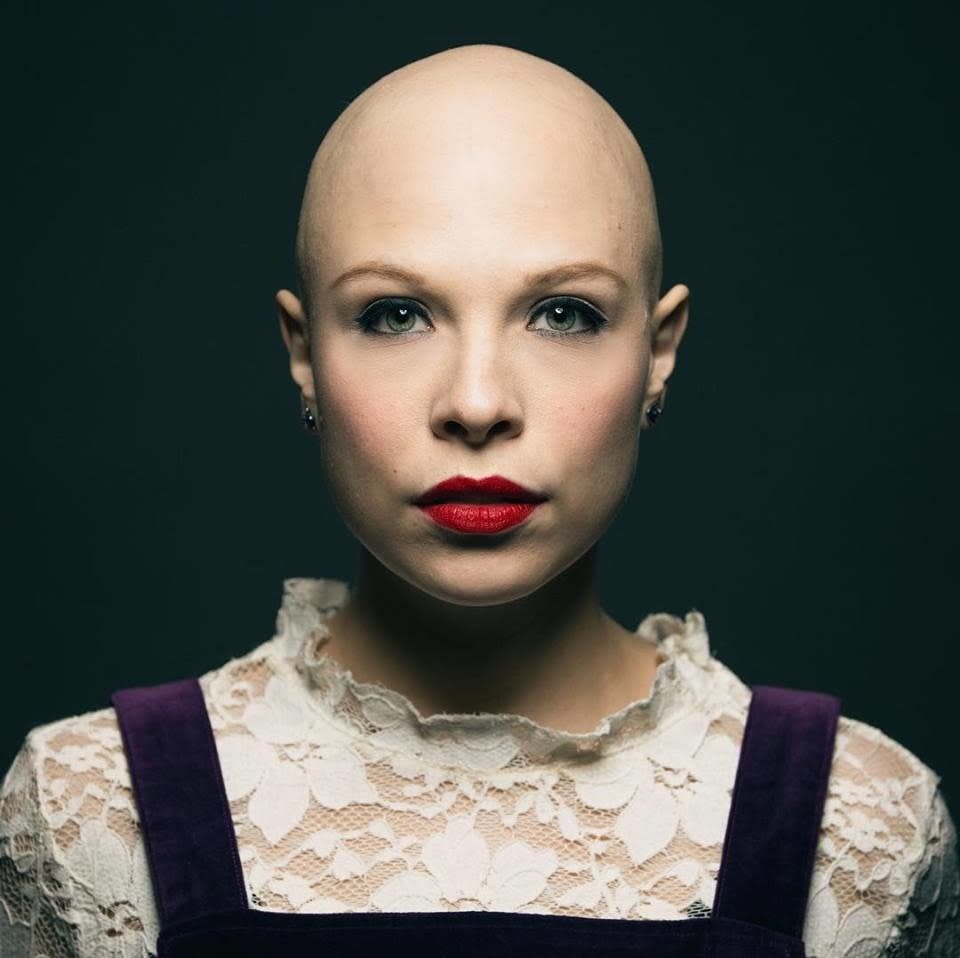
Occupation: actress and singer/songwriter
First lost her hair: Earlier this year
This is really new to me. It’s still only been two or three months that I haven’t had my hair. It happened about two days before I was opening a show, so I was in shock. As an adult, it’s scary, because the first thing that happens is you think something is wrong with you, that you’re sick.
I have days when I get really angry, like I went to see a show the other night, and I sat in the audience and I looked around, like, “Are you fucking kidding me? I’m the only person in the theatre who doesn’t have hair?” Every day is different. I have bad days, not gonna lie, and days when I see myself in the mirror and I think, “you look kinda cool.” When you go into playing a character, you’re taking on a different persona but, as an actor, I like to make connections between the character and myself and use what I know about myself, and that’s all changed — everything from how I look to how I interact with people to what people say to me on the street. It’s affected every aspect of my life in ways I hadn’t imagined.
“I don’t know how the industry is going to react to this.”
I’m lucky that I’m employed and have a show coming up. I haven’t gone on a lot of auditions yet. I have some wigs and I wear them sometimes, but I’m still nervous about the idea of walking into an audition room with a wig and I’m nervous about walking into one without hair. I don’t know what it’s going to bring, which is really scary and really exciting. I don’t know how the industry is going to react to this. I don’t know what the path is for an actor who has no hair, so I’m curious to see what it might be. I would so love it if somebody with alopecia is looking at me and thinks, “she’s doing it, and my life is gonna be fine, I can still do what I want to do.”
Read more about self-image:
We Asked Six Women to Bare Their Cellulite, and the Results Are Breathtaking
This Stunning Photo Series Features Women Covering Their Insecurities in Glitter
Navigating Beauty Standards as a Trans Woman Is an Impossible Balancing Act
Now watch Rapper and Singer Lizzo Talk Bodysuits and Body Image:
